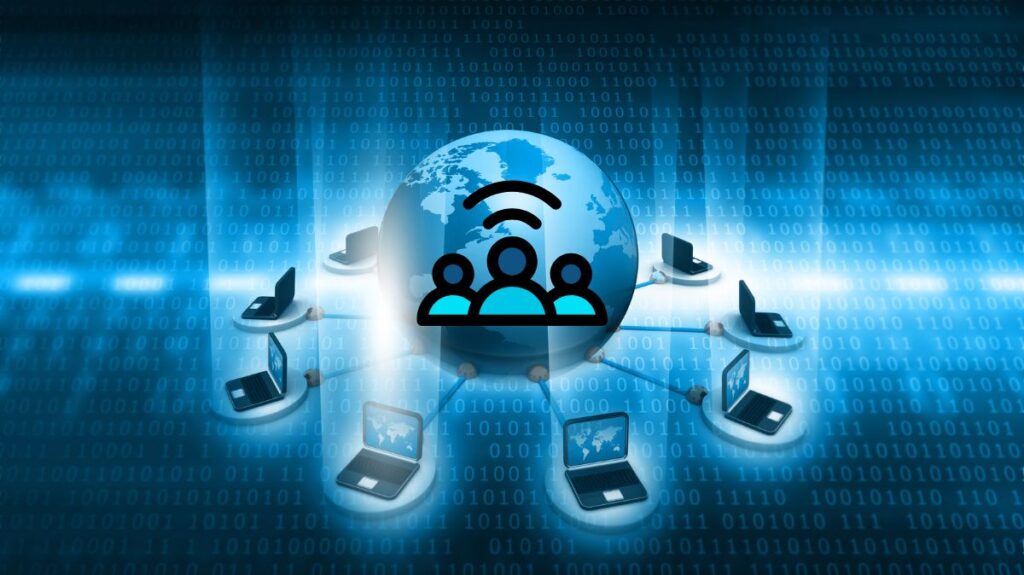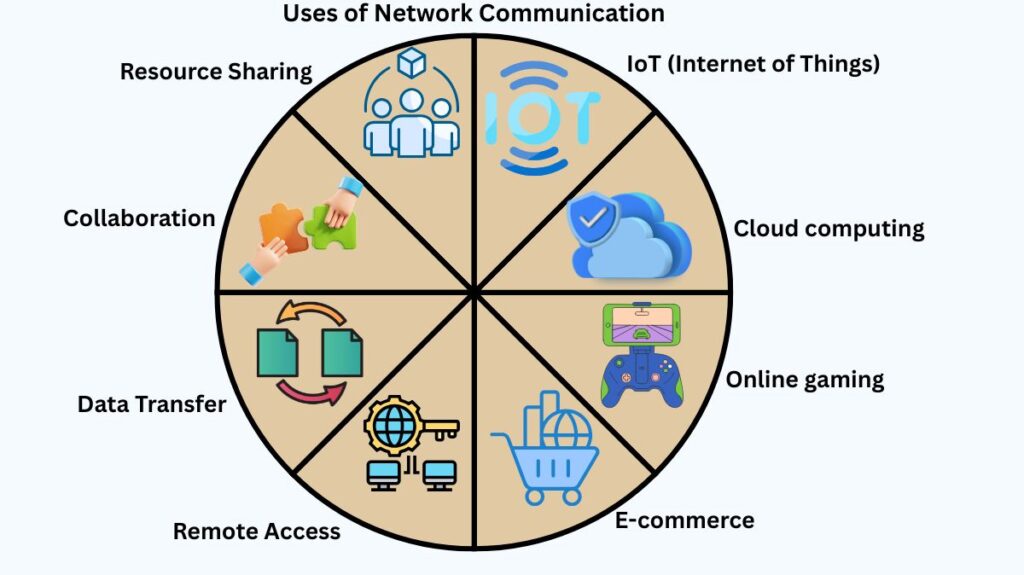Communication and networking Technologies

In order to transfer data and information, networks and communication essentially include connecting various devices and systems. A network is essentially a group of interconnected devices, including computers, phones, servers, and printers, that may exchange data, resources, and services. One way to think of it is as a data digital highway. In networking, communication is the transfer of information via a media between two or more devices while according to predetermined guidelines known as protocols.
This procedure depends on a mix of software and hardware elements that cooperate to send data safely and dependably. One example of how technology has changed global connectedness and information access is the Internet, a sophisticated communication network.
Key Components of Network Communication
Several crucial elements are involved in network communication:
- Sender: The gadget that starts and transmits the information.
- Receiver: The gadget that is supposed to get the information.
- Medium: The actual or wireless channel that the data passes across. Fibre optics, radio waves, and cables can all be examples of this.
- Protocol: The collection of guidelines that control the format, transmission, and comprehension of data over a network. They serve as a kind of universal language for gadgets.
In addition to these fundamental elements, networks make use of a variety of hardware devices:
- By connecting several networks and guiding data packets to the appropriate location, routers serve as “traffic cops” to determine the most effective route.
- Switches are used to link devices within a single network, such as a LAN in an office or house. In order to cut down on needless traffic, they are “smarter” than hubs and only deliver data to the appropriate receiver.
- Modems: Connect your local network to your Internet Service Provider (ISP) by converting digital signals from a computer into analogue signals that may be sent across lines (such as cable or the phone) and vice versa.
Also Read About What Is A CISCO Company? Check Cisco Certification Levels
How Communication works
A network’s communication process consists of the following steps:
- Encoding: Information is transformed into radio, light, or electrical signals.
- Transmission: The selected medium is then traversed by these signals.
- Reception: The signals are gathered by the receiving device.
- Decoding: The signals that are received are transformed back into data that can be used.
Data is divided into tiny parts called packets for transmission. A portion of the data, addressing information (such as source and destination IP addresses), and additional control elements are all contained in each packet. At their destination, these packets are put back together after travelling separately.
Network Requirements
A network needs to fulfil certain requirements in order to operate efficiently:
- Transit time (the amount of time it takes for a message to travel) and response time (the interval between an inquiry and its response) are used to measure performance. The transmission medium, the hardware/software, and the number of users all affect performance.
- The frequency of failure is a measure of reliability.
- Security: This includes preventing unwanted access to data.
Network Protocols
In order to ensure that devices can understand one another, protocols are essential guidelines that specify how data is sent and received via a network. Important instances consist of:
- The Internet’s primary set of protocols is TCP/IP (Transmission Control Protocol/Internet Protocol). TCP makes sure that data is delivered reliably and in the right order, whereas IP handles data addressing and routing.
- Web browsers and web servers communicate via HTTP (Hypertext Transfer Protocol). HTTPS signifies that encryption is being used to secure communication.
Network Types
Networks are categorized according to their physical architecture, size, ownership, and distance travelled:
Local Area Network (LAN)
- Establishes connections between devices in a constrained space, like a house, workplace, or school campus.
- Usually owned by private individuals and restricted to a few km.
- In addition to facilitating high-speed data interchange, Internet access, file sharing, gaming, and centralized management, it is made for sharing resources like computers, printers, and storage.
Metropolitan Area Network, or MAN
- It is intended to cover a whole city.
- Able to link LANs amongst several city offices.
- Could be a public service or privately owned.
- Used to supply broadband services (Internet, phone, video conferencing), connect distant offices, connect LANs, and share data and resources.
Wide Area Network (WAN)
- Offers long-distance data transfer across a nation, continent, or the entire world.
- Provides a wide geographic connection between several LANs. The biggest example of a WAN is the Internet.
- Used to link distant places, share resources among several locations, promote cooperation and communication, give remote access to corporate apps, and make huge data file transfers possible.
Personal Area Network, or PAN
- A little network for a single user’s gadgets, such as pairing a Bluetooth phone with a wireless headphone.
Other types of networks include cellular networks and wireless networks like Wi-Fi.
Importance and Uses of Network Communication

In today’s world, network and communication technologies are essential since they allow for a multitude of applications:
- Resource Sharing: Enables numerous users to share storage, printers, Internet access, and even applications.
- Collaboration: enables group projects and communication via messaging, video conferences, and email.
- Data Transfer: Facilitates effective file sharing and device backups.
- Remote Access: Enables users to access company resources and systems from any location.
- E-commerce: Online purchasing and banking are supported by e-commerce.
- Online gaming: Provides multiplayer experiences by connecting people worldwide.
- Cloud computing: Provides online access to shared computer resources and programs.
- IoT (Internet of Things): The Internet of Things, or IoT, links and makes it easier to communicate with smart gadgets.
Issues and Disadvantages of Networks
Networks offer a number of difficulties in spite of their advantages:
- Security Risks: Computer hackers, viruses, unauthorized access, and cyberattacks can all compromise networks.
- Cost: The high cost of software (security, management tools) and hardware (routers, switches, cables) makes network maintenance costly.
- Performance Problems: Congestion, heavy traffic, and sluggish data transfer rates can affect networks, resulting in dropped packets and decreased effectiveness. Performance can also be impacted by latency, interference, and obsolete gear and software.
- Privacy Concerns: If proper protection methods are not used, more data exchange increases the chance of personal information theft.
- Maintenance: Reliability and performance depend on routine maintenance, which includes expensive and time-consuming hardware replacements and software upgrades.
- System breakdowns: Sometimes brought on by power disruptions or natural disasters, equipment malfunctions and system breakdowns can happen.
- Compatibility and Configuration Errors: Incorrect configuration might result in connectivity issues, and different devices or applications may have compatibility issues.
- Scalability Problems: Performance deterioration may result from networks’ inability to manage growing demand.
To sum up, networking and communication are dynamic domains that establish connections between computers and devices through a variety of techniques and standardized protocols, guaranteeing dependable and effective data transfer. These developments have radically changed the way to handle information, engage with data, and access resources around the world.
Also Read About Centralized Communication: Features, Advantages & Examples
